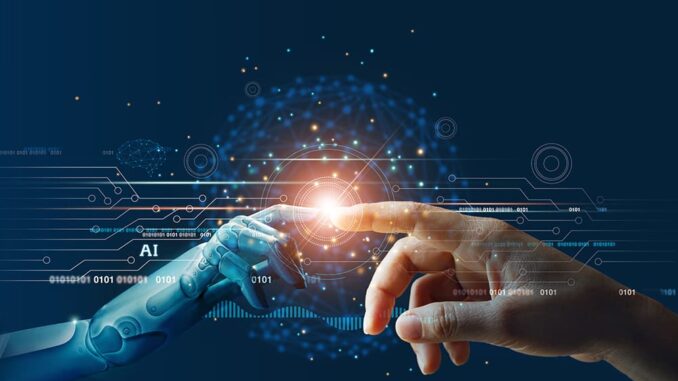
The application of AI spans a wide range of sectors, transforming traditional practices, improving efficiency, and enabling new capabilities. Here are some key sectors where AI is making a significant impact:
1. **Healthcare**: – **Diagnostics**: AI algorithms can analyze medical images (like X-rays and MRIs) to help in diagnosing diseases more accurately and quickly.









– **Personalized Medicine**: AI analyzes genetic information and patient data to tailor treatment plans to individual patients.
– **Predictive Analytics**: AI can predict outbreaks and patient admissions by analyzing trends and data patterns.
2. **Finance**:
– **Fraud Detection**: AI systems monitor transactions in real time to detect patterns indicative of fraud.
– **Algorithmic Trading**: AI algorithms analyze market trends and execute trades at high speeds based on complex algorithms.
– **Risk Management**: AI models assess risk and provide insights to financial institutions for better decision-making.
3. **Retail**:
– **Personalization**: AI analyzes customer behavior and preferences to provide personalized recommendations and improve customer experiences.
– **Inventory Management**: AI systems help optimize inventory levels through predictive analytics, minimizing stockouts and overstock situations.
– **Chatbots**: AI-powered chatbots provide customer service and support, enhancing engagement and satisfaction.
4. **Manufacturing**:
– **Predictive Maintenance**: AI analyzes equipment data to predict failures before they occur, optimizing maintenance schedules and reducing downtime.
– **Quality Control**: AI systems can inspect products using machine vision to detect defects in real-time.
– **Supply Chain Optimization**: AI helps in forecasting demand and optimizing the supply chain for efficiency.
5. **Transportation and Logistics**:
– **Autonomous Vehicles**: AI technology is central to the development of self-driving cars, improving safety and efficiency in transportation.
– **Route Optimization**: AI algorithms analyze traffic patterns to determine the most efficient delivery routes.
– **Fleet Management**: AI helps companies monitor vehicle performance and optimize fleet operations.
6. **Education**:
– **Personalized Learning**: AI-powered platforms adapt to individual students’ learning styles and paces, enhancing educational outcomes.
– **Administrative Tasks**: AI automates grading and administrative functions, allowing educators to focus on teaching.
– **Tutoring Systems**: AI chatbots can provide real-time assistance and tutoring to students outside of the classroom.
7. **Energy**:
– **Smart Grids**: AI analyzes energy consumption data to manage and optimize electricity distribution in real time.
– **Predictive Maintenance**: Similar to manufacturing, AI can predict failures in machinery used in energy production, such as turbines or solar panels.
– **Energy Management**: AI helps businesses and consumers optimize energy use, reducing costs and emissions.
8. **Telecommunications**:
– **Network Optimization**: AI analyzes network traffic and performance data to optimize resource allocation and maintain service quality.
– **Customer Support**: AI-powered virtual assistants and chatbots handle customer inquiries and technical support, enhancing user satisfaction.
– **Predictive Analytics**: AI identifies trends in customer data, helping companies tailor their services and mitigate churn.
9. **Entertainment and Media**:
– **Content Recommendations**: Streaming services use AI algorithms to analyze user preferences and recommend shows, movies, and music.
– **Content Creation**: AI tools assist in creating music, writing scripts, and even generating visual content for movies and games.
– **Audience Analysis**: AI analyses viewer engagement to help producers understand audience preferences.
10. **Agriculture**:
– **Precision Farming**: AI analyzes soil data, weather patterns, and crop health to optimize planting and harvesting.
– **Automation**: AI-driven drones and robots assist in tasks such as planting, watering, and harvesting crops, improving efficiency and productivity.
– **Pest and Disease Detection**: AI systems can monitor crops for signs of pests and diseases, providing timely alerts to farmers.
These examples illustrate the diverse applicability of AI across various sectors, enhancing productivity, efficiency, and customer experiences while also enabling innovation and new business models.

Leave a Reply